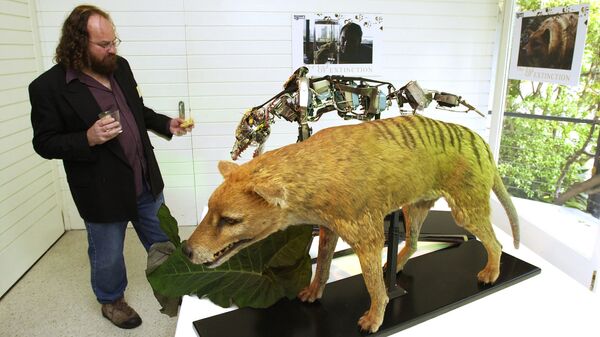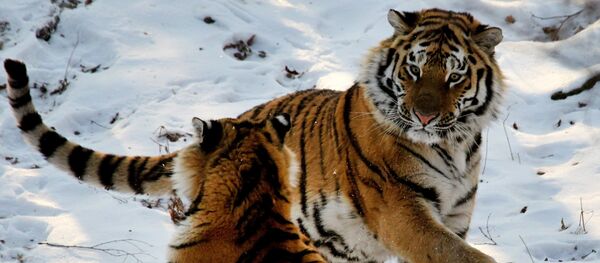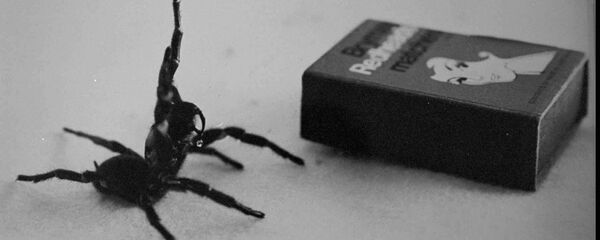The last known Tasmanian tiger died in captivity in a zoo in Tasmania in 1936, one of the 20th century's heartbreaking extinctions. But now, scientists have reason to hope that rumors of the predators' demise were at least somewhat exaggerated: both a tour operator and a former park ranger have recently reported seeing animals that look awfully like Tasmanian tigers.
Over the years, there have been many supposed sightings of the animals, with most ending up attributed to dingoes, boars or feral cats. But two recently reported sightings have made zoologists perk up their ears.
Brian Hobbs, a former tourism operator, revealed a few weeks ago that he'd seen a family of Tasmanian tigers in 1983 when he was walking his dog at night while on a camping trip. Hobbs says he saw the animals clearly in his flashlight from about 20 feet away.
"These animals, I've never seen anything like them before in my life," he told Australia's ABC news network.
"They were dog-shaped — I had a shepherd with me so I certainly know what dogs are about — and in the spotlight I could see they were tan in color and they had stripes on their sides."
The other credible sighting was by former Park Ranger Patrick Shears, who says not only has he seen a Tasmanian tiger, but that Aboriginal people in the area see them frequently.
"They pretty well confirmed that they know about a dog-like creature — not a dingo — that's often seen at night," he said, the Telegraph reports. "They call it the 'moonlight tiger'… They're curious. If you're not moving and not making a noise they'll come within a reasonable range and check you out then just trot off."
Professors Bill Laurance and Sandra Abell of James Cook University will lead the search for the animals in Cape York, in northeastern Australia. Fifty camera traps will be set up in the region in hopes of documenting the officially extinct animal's existence.
Laurance told ABC he finds Hobb's sighting especially solid.
"We have cross-checked the descriptions we received of eye shine color, body size and shape, animal behavior, and other attributes, and these are inconsistent with known attributes of other large-bodied species in north Queensland such as dingoes, wild dogs or feral pigs," he told the Telegraph.
— History In Pictures (@HistoryInPix) March 19, 2017
Though admittedly it would be very unlikely for the species to have survived at such low numbers as to escape detection, "You learn in science to never say never [because] every time we think we know everything it turns around and bites us on the backside," Laurance told ABC.
Tasmanian tigers, or thylacines, were wolf-like predators, and the largest known meat-eating marsupial to have existed alongside human civilizations. They had a distinctive large bite and stripes across their backs and rumps and were about 30 kilograms, the size of a large dog, though they're not actually related to Western dogs or cats. Once apex predators in Australia and New Guinea, they gradually went extinct as a result of competition with dingoes for territory, as well as intense human hunting, scientists surmise.
Abell told ABC time is of the essence in the Tassie tiger hunt.
"We have had declines in our mammals all through Cape York and through Australia, so my concern is that if we leave it too much longer to just go and have a look then we could actually miss out on seeing something," she said.
And though the odds are long, this wouldn't be the first time camera traps found a species thought to be extinct in Cape York: "We've just rediscovered a population of northern bettong where there had been no records since 2003," Abell pointed out.
The survey will also help collect general information about species in Cape York, an area on which relatively little data has been collected, the researchers say.
The Telegraph points out that scientists in Australia have been attempting to clone the Tasmanian tiger, and that Tasmanian tour operator Stuart Malcolm has offered an $1.3 million for proof the animals exist today.





